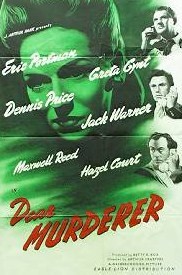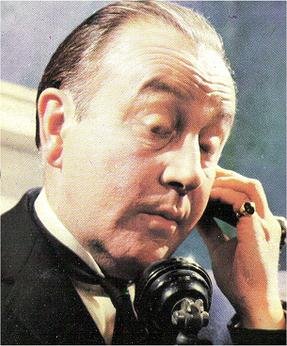
Dennistoun Franklyn John Rose Price was an English actor. He played Louis Mazzini in the Ealing Studios film Kind Hearts and Coronets (1949) and the omnicompetent valet Jeeves in 1960s television adaptations of P. G. Wodehouse's stories.

Margaret Mary Day Lockwood, CBE, was an English actress. One of Britain's most popular film stars of the 1930s and 1940s, her film appearances included The Lady Vanishes (1938), Night Train to Munich (1940), The Man in Grey (1943), and The Wicked Lady (1945). She was nominated for the BAFTA Award for Best British Actress for the 1955 film Cast a Dark Shadow. She also starred in the television series Justice (1971–74).
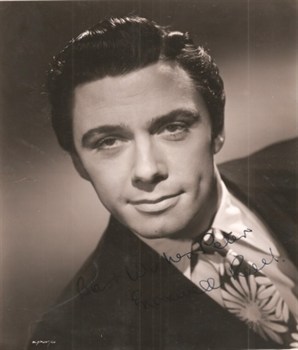
Maxwell Reed was a Northern Irish actor who became a matinee idol in British films during the 1940s and 1950s.
Frank Sydney Box was a British film producer and screenwriter, and brother of British film producer Betty Box. In 1940, he founded the documentary film company Verity Films with Jay Lewis.
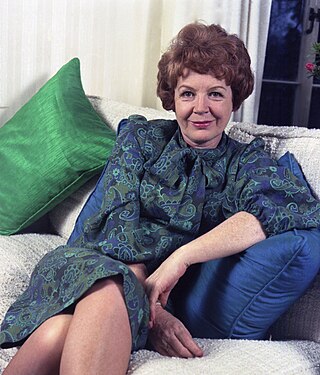
Phyllis Hannah Murray-Hill, known professionally as Phyllis Calvert, was an English film, stage and television actress. She was one of the leading stars of the Gainsborough melodramas of the 1940s such as The Man in Grey (1943) and was one of the most popular movie stars in Britain in the 1940s. She continued her acting career for another 50 years.
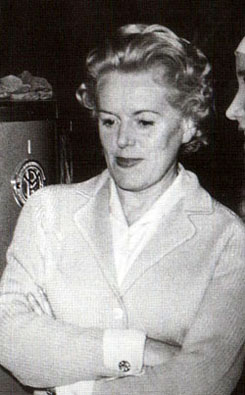
Betty Evelyn Box was a prolific British film producer, usually credited as Betty E. Box.

Eric Harold Portman was an English stage and film actor. He is probably best remembered for his roles in three films for Michael Powell and Emeric Pressburger during the 1940s.

Easy Money is a 1948 British satirical film about a modern British tradition, the football pools. It is composed of four tales about the effect a major win has in four different situations in the post-war period. Written by Muriel and Sydney Box, based on the play "Easy Money" written by Arnold Ridley, and directed by Bernard Knowles, it was released by Gainsborough Pictures.
Arthur Crabtree was a British cinematographer and film director. He directed films with comedians such as Will Hay, the Crazy Gang and Arthur Askey and several of the Gainsborough Melodramas.

Christopher Columbus is a 1949 British biographical film starring Fredric March as Christopher Columbus and Florence Eldridge as Queen Isabella. It is loosely based on the 1941 novel Columbus by Rafael Sabatini with much of the screenplay rewritten by Sydney and Muriel Box.

Greta Gynt was a Norwegian dancer and actress. She is remembered for her starring roles in the British classic films The Dark Eyes of London, Mr. Emmanuel, Take My Life, Dear Murderer and The Ringer.

Jassy is a 1947 British colour film historical melodrama set in the early 19th century, based on a novel by Norah Lofts. It is a Gainsborough melodrama, the only one to be made in Technicolor. It was the last "official" Gainsborough melodrama.

The Brothers is a British film melodrama of 1947, starring Patricia Roc, Will Fyffe and Maxwell Reed, from a novel of the same name by L. A. G. Strong.

When the Bough Breaks is a 1947 film directed by Lawrence Huntington and starring Patricia Roc and Rosamund John. It is an adaptation of an original storyline by Herbert Victor on adoption and the competing ties of one child's birth and foster family.
The Gainsborough melodramas were a sequence of films produced by the British film studio Gainsborough Pictures between 1943 and 1947 which conformed to a melodramatic style. The melodramas were not a film series but an unrelated sequence of films which had similar themes that were usually developed by the same film crew and frequently recurring actors who played similar characters in each. They were mostly based on popular books by female novelists and they encompassed costume dramas, such as The Man in Grey (1943) and The Wicked Lady (1945), and modern-dress dramas, such as Love Story (1944) and They Were Sisters (1945). The popularity of the films with audiences peaked mid-1940s when cinema audiences consisted primarily of women. The influence of the films led to other British producers releasing similarly themed works, such as The Seventh Veil (1945), Pink String and Sealing Wax (1945), Hungry Hill (1947), The White Unicorn (1947), Idol of Paris (1948), and The Reluctant Widow (1950) and often with the talent that made Gainsborough melodramas successful.

The Bad Lord Byron is a 1949 British historical drama film about the life of Lord Byron. It was directed by David MacDonald and starred Dennis Price as Byron with Mai Zetterling, Linden Travers and Joan Greenwood.

The Calendar is a black and white 1948 British drama film directed by Arthur Crabtree and starring Greta Gynt, John McCallum, Raymond Lovell and Leslie Dwyer. It is based on the 1929 play The Calendar and subsequent novel by Edgar Wallace. A previous version had been released in 1931.
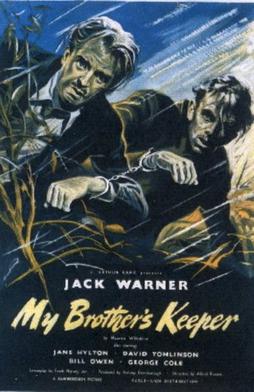
My Brother's Keeper is a 1948 British crime film in the form of a convicts-on-the-run chase thriller, directed by Alfred Roome for Gainsborough Pictures. It was the first of only two films directed by Roome during a long career as a film editor. The film stars Jack Warner and George Cole and was produced by Sydney Box.

Daybreak is a 1948 drama by Riverside Studios – classified by some as 'British Noir' – directed by Compton Bennett and starring Eric Portman, Ann Todd and Maxwell Reed. It is based on a play by Monckton Hoffe.

The Blind Goddess is a 1948 British courtroom drama film directed by Harold French and starring Eric Portman, Anne Crawford and Hugh Williams. The screenplay concerns a secretary who sets out to expose his boss, Lord Brasted, for embezzlement. It was based on a popular 1947 play of the same title by noted barrister Patrick Hastings.
